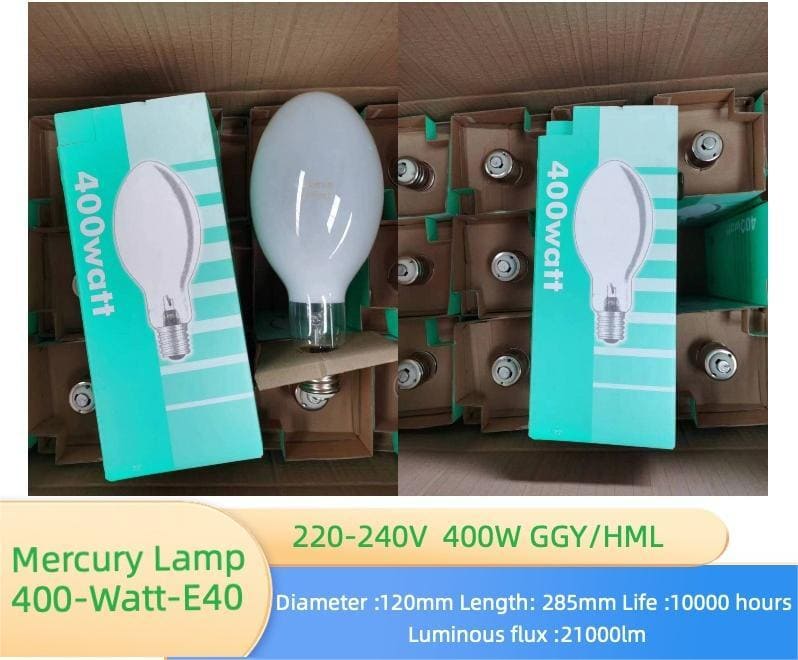Mercury vapor lamps have been a mainstay in outdoor and industrial lighting because they’re super bright and last a long time. These high-intensity discharge (HID) lamps are used to light up big areas like streets, parking lots, sports arenas, and warehouses.
One question people ask is, “Can a mercury vapor lamp be used without a ballast?” The answer is no. You can’t use a mercury vapor lamp without a ballast.
We’ll talk about why you need a ballast for safe and efficient operation of a mercury vapor lamp.
What is a Mercury Vapor Lamp?
A mercury vapor lamp is a type of high-intensity discharge lamp that produces light by passing an electrical arc through vaporized mercury within a pressurized tube. The arc excites the mercury atoms, causing them to emit visible and ultraviolet (UV) light. This process generates a high-intensity, bluish-white light that is particularly effective for large-scale lighting applications.
Mercury vapor lamps are favored for their durability and efficiency. Their ability to cover large areas with bright light has made them a popular choice for outdoor and industrial lighting. However, like all HID lamps, a mercury vapor lamp requires a specific electrical environment to operate, and this is where the mercury ballast comes into play.
What Does a Ballast Do in a Mercury Vapor Lamp?
A ballast is an essential component for the safe and efficient operation of a mercury vapor lamp. Its primary function is to regulate the electrical current that flows through the lamp, ensuring the proper voltage and current are delivered for consistent operation. Here’s how it works:
- Starting the Lamp: When a mercury vapor lamp is first turned on, it requires a high voltage to initiate the arc between the lamp’s electrodes. The ballast provides this starting voltage, creating the necessary conditions for the arc to form.
- Regulating Current: Once the arc is established, the lamp does not need as much voltage. In fact, if the current were left unregulated, it would continue to rise, which could cause the lamp to overheat or even explode. The ballast limits and stabilizes the current, ensuring that the lamp operates safely at its intended voltage and brightness.
- Preventing Flicker and Inconsistency: Ballasts also help stabilize the light output, preventing flickering or dimming. This is particularly important in large-scale applications where steady, bright light is essential for visibility and safety.
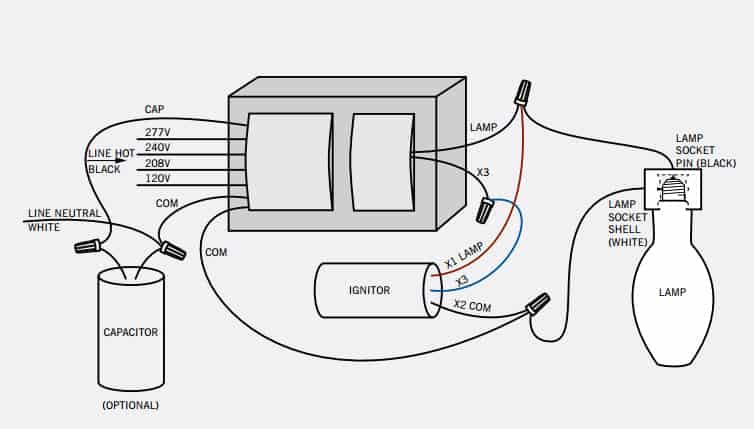
Why Can’t a Mercury Vapor Lamp Be Used Without a Ballast?
Without a ballast, a mercury vapor lamp cannot function properly and may pose significant safety risks. Here’s why a ballast is essential:
- Uncontrolled Current: Mercury vapor lamps are designed to operate with a controlled current. If connected directly to a power source without a ballast, the current flowing through the lamp would increase uncontrollably. This excessive current could cause the lamp to overheat, resulting in internal damage or even the complete failure of the lamp within seconds of being turned on.
- Overheating and Explosions: As the current increases, so does the heat generated inside the lamp. This can cause the arc tube, which contains the vaporized mercury, to expand and eventually rupture. The result could be an explosion that not only destroys the lamp but also poses a serious safety hazard.
- Shortened Lifespan: Even if the lamp doesn’t immediately fail, running a mercury vapor lamp without a ballast will significantly shorten its lifespan. The unregulated electrical current will cause excessive wear on the lamp’s components, leading to premature burnout.
In short, the ballast ensures that the mercury vapor lamp operates within safe electrical parameters, protecting both the lamp and the surrounding environment from potential hazards.
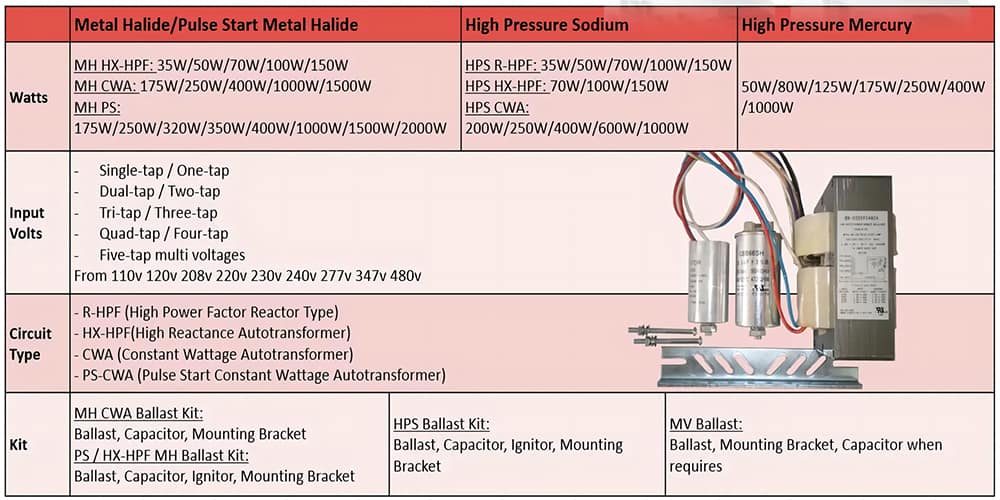
What Happens if a Mercury Vapor Lamp is Used Without a Ballast?
If a mercury vapor lamp is operated without a ballast, the results can be catastrophic. Since the lamp requires a high starting voltage to create the arc and maintain operation, using it without a ballast would cause an immediate surge in electrical current. This could lead to several negative outcomes:
- Immediate Failure: The lamp is likely to fail within moments of being powered on. Without the ballast to regulate the current, the electrical arc inside the lamp would become unstable, leading to overheating and damage to the lamp’s internal components.
- Safety Risks: Overheating can cause the arc tube inside the lamp to crack or explode, posing significant safety risks to anyone nearby. The rupture could release mercury vapor, which is toxic and harmful to both humans and the environment.
- Electrical System Damage: Running a mercury vapor lamp without a ballast could also damage the electrical system it is connected to. The sudden surge in current may overload circuits, blow fuses, or damage other connected equipment.
For these reasons, it is absolutely essential to always use a mercury vapor lamp with the appropriate ballast. Failing to do so can result in immediate lamp failure, safety hazards, and costly repairs.
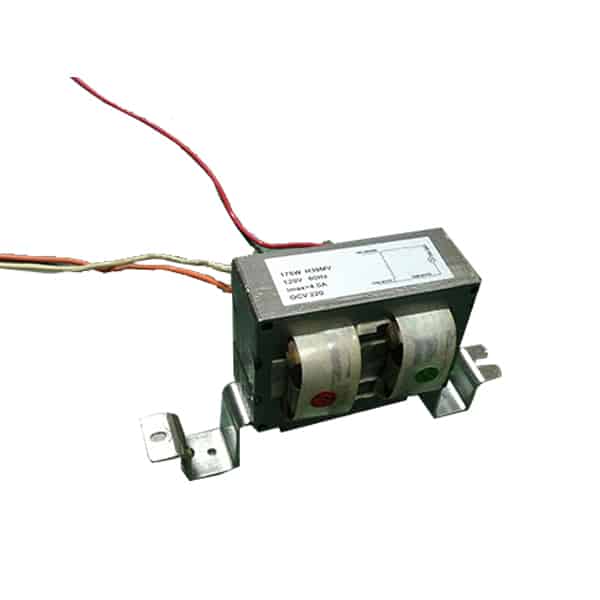
Types of Ballasts Used with Mercury Vapor Lamps
There are two main types of ballasts used with mercury vapor lamps: magnetic ballasts and electronic ballasts. Each has its own benefits and drawbacks, depending on the application.
- Magnetic Ballasts: These are the traditional type of ballasts used in HID lighting systems. They use electromagnetic coils to regulate the current, making them durable and reliable. While magnetic ballasts are still widely used, they are heavier and less energy-efficient compared to modern alternatives. However, their simple construction makes them easy to maintain, and they can last for many years with minimal issues.
- Electronic Ballasts: As a newer technology, electronic ballasts offer greater energy efficiency and more precise control of the electrical current. They are lighter and smaller than magnetic ballasts, making them easier to install and handle. Additionally, electronic ballasts produce less heat, which improves overall system efficiency. However, they tend to be more expensive upfront.
Both types of ballasts are designed to provide the necessary electrical conditions for mercury vapor lamps to operate safely and efficiently. The choice between magnetic and electronic ballasts often depends on the specific needs of the installation, including cost, efficiency, and maintenance requirements.

Applications of Mercury Vapor Lamps with Ballasts
Mercury vapor lamps, when used with the correct ballast, are suitable for a wide range of applications, particularly where bright, intense lighting is needed. Some common applications include:
- Street and Highway Lighting: Mercury vapor lamps have been used for decades to illuminate roads, highways, and intersections due to their powerful light output and long lifespan.
- Industrial Facilities: In factories, warehouses, and other industrial settings, mercury vapor lamps are ideal for providing bright, reliable lighting in large spaces.
- Sports Arenas and Stadiums: Their intense brightness makes mercury vapor lamps perfect for sports venues, where high visibility is critical.
- Outdoor Security Lighting: The durability and high output of mercury vapor lamps make them a common choice for outdoor security lighting in parking lots, campuses, and commercial properties.
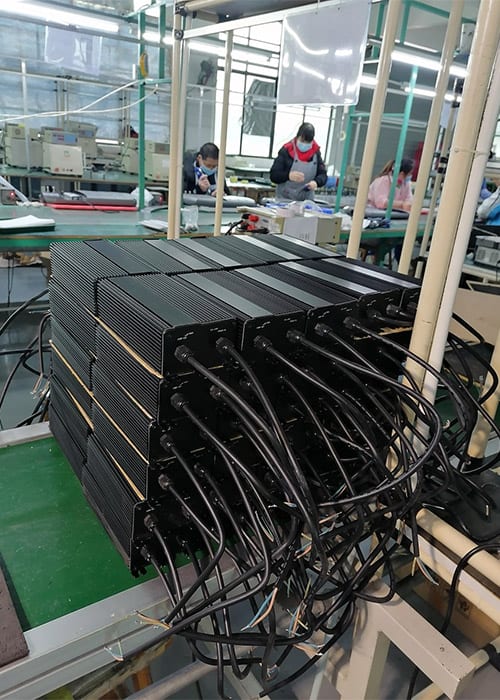
In conclusion, a mercury vapor lamp cannot be used without a ballast. The ballast is necessary to regulate the electricity, control the heat and make sure the lamp operates safely and efficiently.
Without a ballast, the lamp will fail almost immediately, creating a safety hazard and possibly damaging your electrical system. If you’re using any mercury vapor lamps, you need to make sure you have the right ballast and that it’s always in good condition to protect your lamp and the environment.

